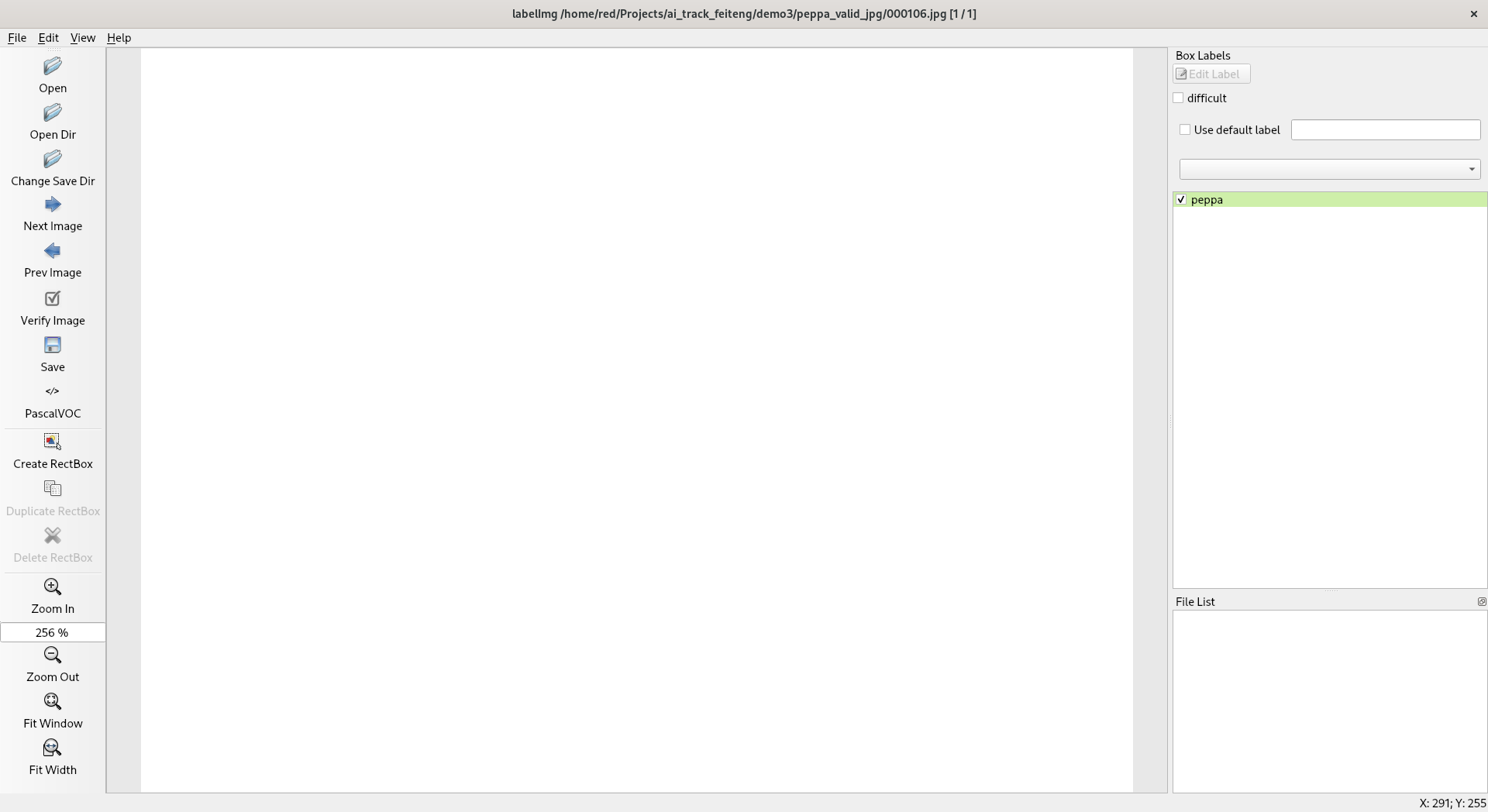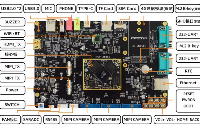前言
這一篇就到了圖像估計光照度算法章節(jié),這篇我主要記錄如何使用 tensorflow2 訓(xùn)練一個從圖片中估計光照度的算法。一般的流程是拍攝多張圖片以及用光照度計來檢測其光照度值,分別作為輸入和輸出。但是在本章呢,為了起到演示的作用,數(shù)據(jù)集我會使用 [MIT-Adobe FiveK Dataset] 。光照度值呢,我使用圖片的 rgb 數(shù)值經(jīng)過算法r0.2126+g0.7152+b*0.0722計算亮度。這樣就有了一定數(shù)量的數(shù)據(jù)集。也就有基礎(chǔ)進行后續(xù)的訓(xùn)練和測試了。下面準(zhǔn)備進入正文。
數(shù)據(jù)獲取
因為 MIT-Adobe FiveK Dataset 數(shù)據(jù)集包含了 5000 張原始 dng 圖像和 5 和專家A,B,C,D,E進行處理之后的 tiff 圖像(一般地,這個數(shù)據(jù)集是用來訓(xùn)練圖像增強相關(guān)的模型的,我這里就用來訓(xùn)練光照度估計算法了,嘿嘿)。因為完整的數(shù)據(jù)壓縮包太大了~50GB。受限電腦的容量和速度,我選擇了使用腳本逐個下載這些圖片(因為這些圖片的下載路徑有規(guī)律,再加上這些圖片的名字在官網(wǎng)可以下載下來,所以腳本就讀取包含圖片名字的文件,然后逐個拼接下載路徑,使用 curl 工具完成下載)。這里,我選擇了下載原始 dng 圖片和專家 C 的 tiff 圖片。
下載 dng 原始文件的腳本是:
#!/usr/bin/bash
#改變當(dāng)前工作路徑
CURRENT_PATH="/home/red/Downloads/fivek_dataset/expertc"
#本文件所在路徑
cd ${CURRENT_PATH}
#改變當(dāng)前路徑
#存儲圖像名稱的list
img_lst=[]
#讀取圖片名列表
files_name=`cat filesAdobe.txt`
files_mit_name=`cat filesAdobeMIT.txt`
j=0
for i in ${files_name};do
# https://data.csail.mit.edu/graphics/fivek/img/dng/a0001-jmac_DSC1459.dng
URL='https://data.csail.mit.edu/graphics/fivek/img/dng/'${i}'.dng'
file_cur=${URL##*/}
echo "Downloading ${URL}@${j}"
j=$((j+1))
if [ -f ${file_cur} ];then
echo "${file_cur} exist"
else
# echo "${file_cur} no exist, it's you"
# break
curl -O ${URL}
fi
done
下載專家 C 處理后的文件腳本是:
#!/usr/bin/bash
#改變當(dāng)前工作路徑
CURRENT_PATH="/home/red/Downloads/fivek_dataset/expertc"
#本文件所在路徑
cd ${CURRENT_PATH}
#改變當(dāng)前路徑
#存儲圖像名稱的list
img_lst=[]
#讀取圖片名列表
files_name=`cat filesAdobe.txt`
files_mit_name=`cat filesAdobeMIT.txt`
j=0
for i in ${files_name};do
#下載由 expert C 所調(diào)整的圖像(可根據(jù)需要下載其它的四類圖像)
URL='https://data.csail.mit.edu/graphics/fivek/img/tiff16_c/'${i}'.tif'
file_cur=${URL##*/}
echo "Downloading ${URL}@${j}"
j=$((j+1))
if [ -f ${file_cur} ];then
echo "${file_cur} exist"
else
echo "${file_cur} no exist, it's you"
# break
curl -O ${URL}
fi
done
經(jīng)過了好幾天斷斷續(xù)續(xù)的下載,最后我一共得到了 1000 張左右圖片。有了圖片之后,下一步就是計算光照度了,這里使用 python 腳本和 pillow 包完成,為了后續(xù)移植到 AI300G 上,我將圖片縮放到了統(tǒng)一的 255*255。并且將計算的光照度和圖像的名稱存儲到一個 csv 文件。這部分腳本如下:
#!/bin/env python3
import sys
import csv
import os
import re
from PIL import Image
gs_illumiance_csv_file_fd=0
gs_illumiance_csv_file_name='illumiance_estimate.csv'
gs_illumiance_data_list=[['Name', 'Illuminance']]
DEST_DIR_NAME=r'PNG255'
def illuname_estimate(t):
r,g,b=t
return r*0.2126+g*0.7152+b*0.0722
def get_pic_pixels(pic_name):
with Image.open(pic_name) as pic:
ans=0
pic=pic.resize((255,255))
print(f'raw name:{pic_name}')
match=re.match(r'w+/(S+).w+', pic_name)
if match:
basename=match.group(1)
basename=DEST_DIR_NAME+'/'+basename+'.png'
print(f'new name:{basename}')
pic.save(basename)
# pic.show()
width, heigh = pic.size
for x in range(width):
for y in range(heigh):
r, g, b = pic.getpixel((x, y))
ans=ans+illuname_estimate((r,g,b))
# 光照度取整
ans=round(ans)
print(f'{pic_name}: illuname ans:{ans}')
return ans
def insert_item(pic_name, illumiance_estimate):
global gs_illumiance_csv_file_fd
global gs_illumiance_csv_file_name
global gs_illumiance_data_list
item_template=['NONE', -1]
item_template[0]=pic_name
item_template[1]=illumiance_estimate
gs_illumiance_data_list.append(item_template)
def do_with_dir(dir_name):
for filename in os.listdir(dir_name):
filepath=os.path.join(dir_name, filename)
if (os.path.isfile(filepath)):
print("do input %s" %(filepath))
ans=get_pic_pixels(filepath)
insert_item(filename, ans)
# return
if len(sys.argv) > 1:
print("do input dir:%s" %(sys.argv[1]))
if not os.path.exists(DEST_DIR_NAME):
os.makedirs(DEST_DIR_NAME)
do_with_dir(sys.argv[1])
gs_illumiance_csv_file_fd=open(gs_illumiance_csv_file_name, 'w', newline='')
csv.writer(gs_illumiance_csv_file_fd).writerows(gs_illumiance_data_list)
else:
print("Please input pic name")
這樣就得到了類似下面的數(shù)據(jù)集:
? head illumiance_estimate.csv
Name,Illuminance
a0351-MB_070908_006_dng.jpeg,3680630
a0100-AlexWed07-9691_dng.jpeg,1258657
a0147-kme_333.jpeg,5168820
a0261-_DSC2228_dng.jpeg,2571498
a0255-_DSC1448.jpeg,8747593
a0054-kme_097.jpeg,5351908
a0393-_DSC0040.jpeg,1783394
a0304-dgw_137_dng.jpeg,3118835
a0437-jmacDSC_0011.jpeg,6140107
至此有了一定數(shù)量的數(shù)據(jù)集(這里我使用了667張照片),接下來就是模型訓(xùn)練了。
模型訓(xùn)練
模型訓(xùn)練的基本思想就是,首先將數(shù)據(jù)集按比例(4:1)拆分為訓(xùn)練集和測試集,然后使用 tensorflow 建立模型訓(xùn)練參數(shù)進行檢驗。
大概流程是:
- 首先是根據(jù) csv 文件建立 tensorflow dataset 格式的數(shù)據(jù)集;
- 建立模型使用數(shù)據(jù)集進行模型訓(xùn)練和測試
這部分代碼為:
#!/usr/bin/python3.11
TF_ENABLE_ONEDNN_OPTS=0
import numpy as np
import os
import PIL
import PIL.Image
import tensorflow as tf
import pathlib
import csv
import pandas as pd
import tensorflow.data
import sys
import matplotlib.pyplot as plt
AUTOTUNE=tensorflow.data.AUTOTUNE
BATCH_SIZE=32
IMG_WIDTH=255
IMG_HEIGHT=255
ILLUMINACE_FILE=r'illumiance_estimate.csv'
print(tf.__version__)
import tensorflow as tf
import pandas as pd
image_count = len(os.listdir(r'JP'))
print(f'whole img count={image_count}')
# 假設(shè)CSV文件有兩列:'image_path' 和 'label'
df = pd.read_csv(ILLUMINACE_FILE)
# 將DataFrame轉(zhuǎn)換為TensorFlow可以處理的格式
image_paths = df['Name'].values
labels = df['Illuminance'].values
labels = labels.astype(np.float32)
labels /= 16777215.0
# 創(chuàng)建一個Dataset
gs_dataset = tf.data.Dataset.from_tensor_slices((image_paths, labels))
print(type(gs_dataset))
print(gs_dataset)
print(r'-------------------------------------------')
# 定義一個函數(shù)來加載和預(yù)處理圖像
def load_and_preprocess_image(image_path, label):
print(image_path)
image_path='JP/'+image_path
image = tf.io.read_file(image_path)
image = tf.image.decode_jpeg(image, channels=3)
image = tf.image.resize(image, [IMG_WIDTH, IMG_HEIGHT])
# image /= 255.0 # 歸一化
return image, label
# 應(yīng)用這個函數(shù)到Dataset上
gs_dataset = gs_dataset.map(load_and_preprocess_image)
# 打亂數(shù)據(jù)
gs_dataset = gs_dataset.shuffle(image_count, reshuffle_each_iteration=False)
val_size = int(image_count * 0.2)
gs_train_ds = gs_dataset.skip(val_size)
gs_val_ds = gs_dataset.take(val_size)
def configure_for_performance(ds):
ds = ds.cache()
ds = ds.shuffle(buffer_size=1000)
ds = ds.batch(BATCH_SIZE)
ds = ds.prefetch(buffer_size=AUTOTUNE)
return ds
gs_train_ds = configure_for_performance(gs_train_ds)
gs_val_ds = configure_for_performance(gs_val_ds)
image_batch, illuminance_batch = next(iter(gs_train_ds))
# plt.figure(figsize=(10, 10))
# for i in range(9):
# ax = plt.subplot(3, 3, i + 1)
# print(image_batch[i])
# # img_data=image_batch[i].numpy()*255.0
# # plt.imshow(img_data.astype("uint8"))
# plt.imshow(image_batch[i].numpy().astype("uint8"))
# illuminance = illuminance_batch[i]
# plt.title(illuminance.numpy())
# plt.axis("off")
# plt.show()
# sys.exit()
model = tf.keras.Sequential([
tf.keras.layers.Rescaling(1./255),
tf.keras.layers.Conv2D(32, (3,3), activation='relu', input_shape=(IMG_WIDTH, IMG_HEIGHT, 3)),
tf.keras.layers.MaxPooling2D(2, 2),
tf.keras.layers.Conv2D(64, (3, 3), activation='relu'),
tf.keras.layers.MaxPooling2D(2, 2),
tf.keras.layers.Conv2D(32, 3, activation='relu'),
tf.keras.layers.MaxPooling2D(),
tf.keras.layers.Flatten(),
tf.keras.layers.Dense(128, activation='relu'),
tf.keras.layers.Dense(1)
])
model.compile(
optimizer='adam',
loss='mean_squared_error')
model.fit(
gs_train_ds,
validation_data=gs_val_ds,
epochs=12
)
model.save("illu_v01")
執(zhí)行上述代碼,可以看到最后的 loss 和 val_loss 為:
? ./train_tf2_v2.py
2024-08-08 13:41:48.341117: I tensorflow/core/util/port.cc:113] oneDNN custom operations are on. You may see slightly different numerical results due to floating-point round-off errors from different computation orders. To turn them off, set the environment variable `TF_ENABLE_ONEDNN_OPTS=0`.
2024-08-08 13:41:48.342596: I external/local_tsl/tsl/cuda/cudart_stub.cc:31] Could not find cuda drivers on your machine, GPU will not be used.
2024-08-08 13:41:48.363696: E external/local_xla/xla/stream_executor/cuda/cuda_dnn.cc:9261] Unable to register cuDNN factory: Attempting to register factory for plugin cuDNN when one has already been registered
2024-08-08 13:41:48.363729: E external/local_xla/xla/stream_executor/cuda/cuda_fft.cc:607] Unable to register cuFFT factory: Attempting to register factory for plugin cuFFT when one has already been registered
2024-08-08 13:41:48.364549: E external/local_xla/xla/stream_executor/cuda/cuda_blas.cc:1515] Unable to register cuBLAS factory: Attempting to register factory for plugin cuBLAS when one has already been registered
2024-08-08 13:41:48.368601: I external/local_tsl/tsl/cuda/cudart_stub.cc:31] Could not find cuda drivers on your machine, GPU will not be used.
2024-08-08 13:41:48.368762: I tensorflow/core/platform/cpu_feature_guard.cc:182] This TensorFlow binary is optimized to use available CPU instructions in performance-critical operations.
To enable the following instructions: AVX2 AVX_VNNI FMA, in other operations, rebuild TensorFlow with the appropriate compiler flags.
2024-08-08 13:41:48.801750: W tensorflow/compiler/tf2tensorrt/utils/py_utils.cc:38] TF-TRT Warning: Could not find TensorRT
2.15.0
whole img count=667
2024-08-08 13:41:51.138713: I external/local_xla/xla/stream_executor/cuda/cuda_executor.cc:901] successful NUMA node read from SysFS had negative value (-1), but there must be at least one NUMA node, so returning NUMA node zero. See more at https://github.com/torvalds/linux/blob/v6.0/Documentation/ABI/testing/sysfs-bus-pci#L344-L355
2024-08-08 13:41:51.139135: W tensorflow/core/common_runtime/gpu/gpu_device.cc:2256] Cannot dlopen some GPU libraries. Please make sure the missing libraries mentioned above are installed properly if you would like to use GPU. Follow the guide at https://www.tensorflow.org/install/gpu for how to download and setup the required libraries for your platform.
Skipping registering GPU devices...
< class 'tensorflow.python.data.ops.from_tensor_slices_op._TensorSliceDataset' >
< _TensorSliceDataset element_spec=(TensorSpec(shape=(), dtype=tf.string, name=None), TensorSpec(shape=(), dtype=tf.float32, name=None)) >
-------------------------------------------
Tensor("args_0:0", shape=(), dtype=string)
Epoch 1/12
17/17 [==============================] - 11s 603ms/step - loss: 98.9302 - val_loss: 0.1012
Epoch 2/12
17/17 [==============================] - 8s 495ms/step - loss: 0.0493 - val_loss: 0.0043
Epoch 3/12
17/17 [==============================] - 8s 481ms/step - loss: 0.0078 - val_loss: 0.0043
Epoch 4/12
17/17 [==============================] - 8s 479ms/step - loss: 0.0025 - val_loss: 0.0040
Epoch 5/12
17/17 [==============================] - 8s 477ms/step - loss: 0.0023 - val_loss: 0.0029
Epoch 6/12
17/17 [==============================] - 8s 480ms/step - loss: 0.0021 - val_loss: 0.0028
Epoch 7/12
17/17 [==============================] - 8s 482ms/step - loss: 0.0020 - val_loss: 0.0028
Epoch 8/12
17/17 [==============================] - 8s 482ms/step - loss: 0.0019 - val_loss: 0.0027
Epoch 9/12
17/17 [==============================] - 8s 482ms/step - loss: 0.0018 - val_loss: 0.0026
Epoch 10/12
17/17 [==============================] - 8s 485ms/step - loss: 0.0017 - val_loss: 0.0026
Epoch 11/12
17/17 [==============================] - 8s 485ms/step - loss: 0.0015 - val_loss: 0.0023
Epoch 12/12
17/17 [==============================] - 8s 484ms/step - loss: 0.0011 - val_loss: 0.0020
并且模型也保存在了 illu_v01 目錄。
? ls illu_v01/
assets fingerprint.pb keras_metadata.pb saved_model.pb variables
模型測試
現(xiàn)在有可模型,下面就是測試下自己的模型,使用下述 python 代碼在 PC 端進行測試:
#!/usr/bin/python3.11
import numpy as np
import os
import PIL
import PIL.Image
import tensorflow as tf
import pathlib
import csv
import pandas as pd
import tensorflow.data
import sys
import matplotlib.pyplot as plt
IMG_WIDTH=255
IMG_HEIGHT=255
reload_model=tf.keras.models.load_model("illu_v01")
image_path=r'./JP/a0001-jmac_DSC1459.jpeg'
if len(sys.argv) < 2:
print('Please input some pic to predict')
sys.exit()
else:
image_path=sys.argv[1]
image = tf.io.read_file(image_path)
image = tf.image.decode_jpeg(image, channels=3)
image = tf.image.resize(image, [IMG_WIDTH, IMG_HEIGHT])
image = tf.reshape(image, [1, IMG_WIDTH, IMG_HEIGHT, 3])
# sys.exit()
predictions=reload_model.predict(image)
print(f'{image_path} ans={predictions*16777215}')
簡單測試下模型:
check_tf2.py JP/a0001-jmac_DSC1459.jpeg
2024-08-08 13:57:08.263506: I tensorflow/core/util/port.cc:113] oneDNN custom operations are on. You may see slightly different numerical results due to floating-point round-off errors from different computation orders. To turn them off, set the environment variable `TF_ENABLE_ONEDNN_OPTS=0`.
2024-08-08 13:57:08.264895: I external/local_tsl/tsl/cuda/cudart_stub.cc:31] Could not find cuda drivers on your machine, GPU will not be used.
2024-08-08 13:57:08.285614: E external/local_xla/xla/stream_executor/cuda/cuda_dnn.cc:9261] Unable to register cuDNN factory: Attempting to register factory for plugin cuDNN when one has already been registered
2024-08-08 13:57:08.285646: E external/local_xla/xla/stream_executor/cuda/cuda_fft.cc:607] Unable to register cuFFT factory: Attempting to register factory for plugin cuFFT when one has already been registered
2024-08-08 13:57:08.286510: E external/local_xla/xla/stream_executor/cuda/cuda_blas.cc:1515] Unable to register cuBLAS factory: Attempting to register factory for plugin cuBLAS when one has already been registered
2024-08-08 13:57:08.290464: I external/local_tsl/tsl/cuda/cudart_stub.cc:31] Could not find cuda drivers on your machine, GPU will not be used.
2024-08-08 13:57:08.290608: I tensorflow/core/platform/cpu_feature_guard.cc:182] This TensorFlow binary is optimized to use available CPU instructions in performance-critical operations.
To enable the following instructions: AVX2 AVX_VNNI FMA, in other operations, rebuild TensorFlow with the appropriate compiler flags.
2024-08-08 13:57:08.725843: W tensorflow/compiler/tf2tensorrt/utils/py_utils.cc:38] TF-TRT Warning: Could not find TensorRT
2024-08-08 13:57:11.051710: I external/local_xla/xla/stream_executor/cuda/cuda_executor.cc:901] successful NUMA node read from SysFS had negative value (-1), but there must be at least one NUMA node, so returning NUMA node zero. See more at https://github.com/torvalds/linux/blob/v6.0/Documentation/ABI/testing/sysfs-bus-pci#L344-L355
2024-08-08 13:57:11.051982: W tensorflow/core/common_runtime/gpu/gpu_device.cc:2256] Cannot dlopen some GPU libraries. Please make sure the missing libraries mentioned above are installed properly if you would like to use GPU. Follow the guide at https://www.tensorflow.org/install/gpu for how to download and setup the required libraries for your platform.
Skipping registering GPU devices...
1/1 [==============================] - 0s 57ms/step
JP/a0001-jmac_DSC1459.jpeg ans=[[check_tf2.py JP/a0001-jmac_DSC1459.jpeg
2024-08-08 13:57:08.263506: I tensorflow/core/util/port.cc:113] oneDNN custom operations are on. You may see slightly different numerical results due to floating-point round-off errors from different computation orders. To turn them off, set the environment variable `TF_ENABLE_ONEDNN_OPTS=0`.
2024-08-08 13:57:08.264895: I external/local_tsl/tsl/cuda/cudart_stub.cc:31] Could not find cuda drivers on your machine, GPU will not be used.
2024-08-08 13:57:08.285614: E external/local_xla/xla/stream_executor/cuda/cuda_dnn.cc:9261] Unable to register cuDNN factory: Attempting to register factory for plugin cuDNN when one has already been registered
2024-08-08 13:57:08.285646: E external/local_xla/xla/stream_executor/cuda/cuda_fft.cc:607] Unable to register cuFFT factory: Attempting to register factory for plugin cuFFT when one has already been registered
2024-08-08 13:57:08.286510: E external/local_xla/xla/stream_executor/cuda/cuda_blas.cc:1515] Unable to register cuBLAS factory: Attempting to register factory for plugin cuBLAS when one has already been registered
2024-08-08 13:57:08.290464: I external/local_tsl/tsl/cuda/cudart_stub.cc:31] Could not find cuda drivers on your machine, GPU will not be used.
2024-08-08 13:57:08.290608: I tensorflow/core/platform/cpu_feature_guard.cc:182] This TensorFlow binary is optimized to use available CPU instructions in performance-critical operations.
To enable the following instructions: AVX2 AVX_VNNI FMA, in other operations, rebuild TensorFlow with the appropriate compiler flags.
2024-08-08 13:57:08.725843: W tensorflow/compiler/tf2tensorrt/utils/py_utils.cc:38] TF-TRT Warning: Could not find TensorRT
2024-08-08 13:57:11.051710: I external/local_xla/xla/stream_executor/cuda/cuda_executor.cc:901] successful NUMA node read from SysFS had negative value (-1), but there must be at least one NUMA node, so returning NUMA node zero. See more at https://github.com/torvalds/linux/blob/v6.0/Documentation/ABI/testing/sysfs-bus-pci#L344-L355
2024-08-08 13:57:11.051982: W tensorflow/core/common_runtime/gpu/gpu_device.cc:2256] Cannot dlopen some GPU libraries. Please make sure the missing libraries mentioned above are installed properly if you would like to use GPU. Follow the guide at https://www.tensorflow.org/install/gpu for how to download and setup the required libraries for your platform.
Skipping registering GPU devices...
1/1 [==============================] - 0s 57ms/step
JP/a0001-jmac_DSC1459.jpeg ans=[[5459503.]].]]
發(fā)現(xiàn)估計的光照度值是 5459503 和實際的 5363799 對比一下還是有15%左右的誤差。但是目前為止,整個模型訓(xùn)練測試流程已經(jīng)完成,下一步在是PC端模擬拉流使用模型對圖像進行實時計算了,期待哦。
審核編輯 黃宇
-
算法
+關(guān)注
關(guān)注
23文章
4599瀏覽量
92637 -
模型
+關(guān)注
關(guān)注
1文章
3171瀏覽量
48711
發(fā)布評論請先 登錄
相關(guān)推薦
基于差分卷積神經(jīng)網(wǎng)絡(luò)的低照度車牌圖像增強網(wǎng)絡(luò)

AI大模型的訓(xùn)練數(shù)據(jù)來源分析
索尼FCB-EV9500M的星光級低照度

如何訓(xùn)練ai大模型
【「嵌入式Hypervisor:架構(gòu)、原理與應(yīng)用」閱讀體驗】+第三四章閱讀報告
《DNK210使用指南 -CanMV版 V1.0》第三章 CanMV簡介
人臉識別模型訓(xùn)練流程
人臉識別模型訓(xùn)練是什么意思
深度學(xué)習(xí)模型訓(xùn)練過程詳解
求助,關(guān)于OP191輸出波形的問題求解
【大語言模型:原理與工程實踐】大語言模型的預(yù)訓(xùn)練
如何使用Python進行圖像識別的自動學(xué)習(xí)自動訓(xùn)練?
【飛騰派4G版免費試用】第三章:抓取圖像,手動標(biāo)注并完成自定義目標(biāo)檢測模型訓(xùn)練和測試
【飛騰派4G版免費試用】 第三章:抓取圖像,手動標(biāo)注并完成自定義目標(biāo)檢測模型訓(xùn)練和測試





 第三章:訓(xùn)練圖像估計光照度算法模型
第三章:訓(xùn)練圖像估計光照度算法模型











評論